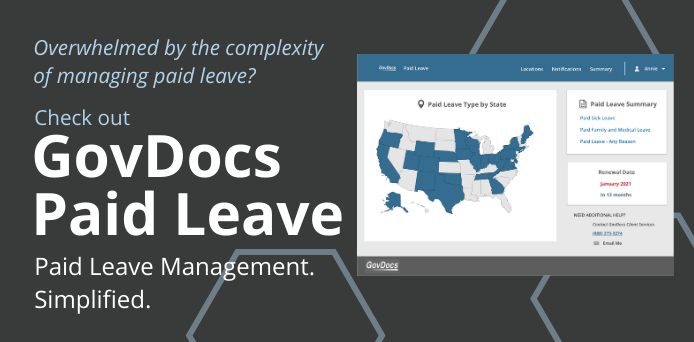EMPLOYMENT LAW NEWS
New York City Updates Paid Sick Leave Law
By Kris Janisch
Published Oct. 1, 2020

Employers with 100 or more workers must now provide up to 56 hours of paid safe/sick leave. The additional leave can’t be used until Jan. 1, 2021.
The New York City Council in late September updated its paid sick leave ordinance to align with the recently enacted New York State paid sick leave law.
Enacted Sept. 23, the amendments to New York City’s Paid Sick and Safe Leave Law now aligns with the state’s accrual rates and usage parameters. The amended NYC ordinance also created new notice requirements and expands the definition of “adverse actions.”
The changes to New York City’s paid sick leave law are now in effect.
Meanwhile, New York State’s paid sick leave law went into effect Sept. 30. Employees now begin accruing the time off. However, employees cannot begin using the leave until 2021.
NYC Paid Sick Leave
New York City’s paid sick leave law is based on company size and income:
- Small businesses with four or fewer employees and an income less than $1 million must provide 40 hours of unpaid safe/sick leave
- Small businesses with four or fewer employees but have an income greater than $1 million must provide 40 hours of paid safe/sick leave
- Most businesses with 99 or fewer employees must still provide 40 hours of paid sick leave
However, large employers with 100 or more workers must now provide up to 56 hours of paid safe/sick leave. The additional leave can’t be used until Jan. 1, 2021.
Also, employers must provide the amount of paid sick leave available to employees each pay period.
Paid Leave Management. Simplified.
Employees who are charged for obtaining documentation when they use leave for three or more days in a row must be reimbursed by the employer.
Lastly, the city expanded the definition of adverse action. There are associated fines when an employer is found to have retaliated against employees who use paid sick leave or violates other portions of the ordinance.
NYC Paid Sick Leave – Covered Uses
Covered uses under New York City’s paid sick leave law include:
- An employee’s mental or physical illness, injury or health condition or need for medical diagnosis, care or treatment of a mental or physical illness, injury or health condition or need for preventive medical care

- Care of a family member who needs medical diagnosis, care or treatment of a mental or physical illness, injury or health condition or who needs preventive medical care
- Closure of such employee’s place of business by order of a public official due to a public health emergency or such employee’s need to care for a child whose school or childcare provider has been closed by order of a public official due to a public health emergency
Paid Leave Laws Nationwide
This change from New York City illustrates the rapidly changing state of paid leave laws across the country.
Meanwhile, the COVID-19 pandemic has prompted lawmakers to reexamine existing paid leave laws and consider the need for additional legislation.
As legislators respond to the growing concern over paid leave from constituents, we will likely continue to see new and more generous paid leave laws enacted. The complexity of these laws also underscores the need for employers to study up and follow guidance and updates now and in the future.
This Employment Law News blog is intended for market awareness only, it is not to be used for legal advice or counsel.
Keep Informed
with GovDocs Labor Law News

What is GovDocs?
GovDocs simplifies employment law compliance for large, multi-jurisdiction employers in the U.S. and Canada. The GovDocs software platform integrates three solutions in one convenient place to help you master the employment laws impacting your business. Whether you manage a postings, minimum wage or paid leave program, our products cut through research time, provide proactive insights into the everchanging landscape of employment laws and reduce the risk of noncompliance. The company is headquartered in St. Paul, Minn.
Have fewer than 30 locations?
The GovDocs Poster Store simplifies posting compliance for employers with less than 30 locations across all industries, offering a variety of posting products to meet your labor law compliance needs.



